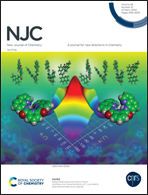An oriented MXene/silk fibroin nanofiber hydrogel with high strength and strain response ability
Abstract
To achieve a conductive hydrogel with favourable mechanical and electrical properties, an oriented Mxene-SNF (MSNF) conductive hydrogel was developed using the directional freezing technique. This process involved combining silk fibroin nanofibers (SNF) rich in β-sheet structures with MXene nanosheets to establish an oriented internal cross-linked network. The study investigated the influence of various factors on the hydrogel's mechanical and electrical properties. Results demonstrated that the hydrogel's mechanical properties were influenced by SNF content, MXene content and internal structure. Optimal mechanical properties and favourable electrical conductivity were achieved when the SNF mass fraction was 10%, the MXene mass fraction was 10%, and the internal structure was oriented. The obtained oriented MSNF hydrogel displayed a tensile strain of 80% ± 3%, a tensile stress of 0.89 ± 0.03 MPa, and an elastic modulus of 3.41 ± 0.05 MPa, roughly twice that of the human forearm skin. It maintained a stable resistance response at 0–70% tensile strain. To demonstrate its stability and durability, the hydrogel underwent 500 cycles within the 30–50% tensile strain interval. Therefore, the conductive hydrogel exhibits the potential to be attached to different parts of the human body for real-time monitoring of human movement. Its strain-sensing potential holds value in the field of flexible wearable sensors.



 Please wait while we load your content...
Please wait while we load your content...